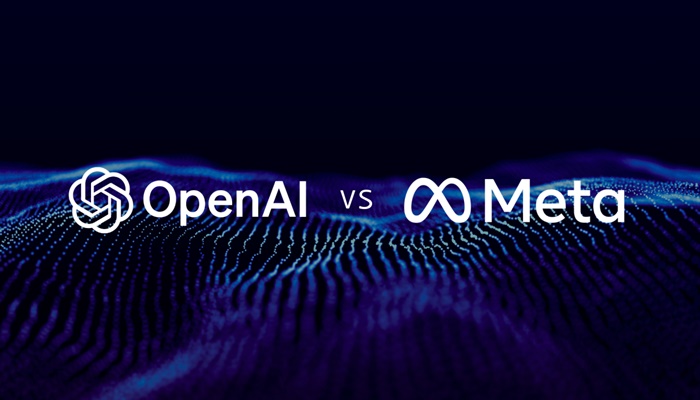The modern workplace is defined not just by productivity software and hybrid schedules, but by a blistering, constantly evolving vocabulary coined by Gen Z and Millennials. Terms like “quiet quitting,” “rage applying,” and “micro retirement” are more than just ephemeral social media trends; they are precise linguistic tools that articulate profound shifts in labor leverage, employee expectations, and the very definition of a meaningful career.
According to the World Economic Forum, this slang represents not just reactions to burnout and misaligned values, but a strategic effort to make invisible workplace practices visible. By naming these phenomena – from managerial tactics to personal defense mechanisms – younger workers are engaging in a form of decentralized, collective bargaining that pressures media narratives, influences organizational HR policies, and feeds political debates on hours, benefits, and mental-health support. This new lexicon effectively shifts the power dynamic from a silent acceptance of corporate demands to a vocal, organized assertion of personal boundaries and value.
The analysis of this slang reveals four strategic pillars of contemporary work life
The Language of Boundary-Setting: The Quiet Revolution
This category of slang is characterized by a conscious retreat from the culture of overwork, explicitly defining the line between professional duty and personal life. It reframes engagement as a choice rather than an obligation.
Quiet Quitting and Bare Minimum Effort
The most viral term of this generation, Quiet Quitting (Origin: Viral TikTok term, 2022), is often misunderstood as outright laziness. In reality, it describes the deliberate act of doing only the work that is explicitly required by the employment contract, refusing to engage in unpaid overtime, extra-curricular projects, or tasks outside the job description.
The term’s massive popularity spotlights two critical economic and cultural shifts. First, it is linked not to lazy employees, but to bad bosses and poor management, indicating that high disengagement (Gallup reports a high percentage of workers globally feeling disconnected) is a symptom of poor leadership and toxic culture (Harvard Business Review). Second, it represents an economic reckoning: employees are demanding to be paid for all labor rendered, pushing back against the expectation of emotional and temporal subsidy they provide to the firm.
This concept is further supported by the slang term Bare Minimum Monday (Origin: Social media coinage, 2023). A riff on the quiet quitting philosophy, this term focuses on managing weekly energy and anxiety by deliberately pacing effort. The implication is a refusal to instantly jump into the high-stress demands of the work week, reserving the bulk of discretionary effort for later, more productive days.
Anxiety and Ethical Alignment
While quiet quitting manages effort, other terms address the emotional and ethical burden of work:
Sunday Scaries (Origin: Urban Dictionary, 2009; resurged post-pandemic): This anxiety is not new, but its modern application is now explicitly linked to chronic, work-related stress, amplifying the need for better mental health provisions. The prevalence of this term in professional conversation puts pressure on HR departments to address the systemic causes of pre-week anxiety.
Conscious Quitting (Origin: Tech.co, business media term): This refers to employees who exit jobs not over pay or hours, but because the role or the company’s business model violates their personal ethics or values. This trend – often seen in the tech and finance sectors – injects a powerful political and ethical dimension into labor decisions, forcing companies to prove that their mission aligns with the stated values of a socially conscious workforce.
Employer Tactics and the Crisis of Recognition: The Quiet Economy
Not all the new slang describes employee actions; a significant portion names and critiques practices used by employers and managers. By naming these hidden tactics, younger workers make them visible and therefore contestable.
Exploitation by Stealth: Quiet Promotion and Hiring
The rise of Quiet Promotion (Origin: Inc.com, managerial strategy critique), is one of the most critical terms exposing structural inequity. This practice involves granting an employee new, often complex, high-visibility responsibilities (managing a new team, owning a larger project) without providing a commensurate change in job title, salary, or benefits.
The social and economic implication is clear: it’s a form of exploitation by stealth, loading the employee with the burden of a promotion while delaying or outright denying the financial reward. The widespread recognition of this term creates a political pressure point within organizations, forcing managers to formalize promotions and address equity issues surrounding workload distribution. (Inc.com)
Similarly, Quiet Hiring (Origin: HR/Talent Strategy term) is a managerial strategy where companies fill skill gaps internally, either through cross-training existing employees or using short-term contract workers, rather than initiating a formal, paid hiring process. While HR professionals may frame it as internal mobility (MLA Global), employees often experience it as an increase in their workload (Quiet Promotion) or a failure to invest adequately in permanent staffing, leading to burnout and talent attrition.
Performative Presence vs. Real Work
The post-pandemic return-to-office (RTO) mandates generated new terms focused on the futility of mandatory attendance:
Coffee Badging (Origin: Post-pandemic RTO observation): This term describes the performative act of showing up at the office just long enough to “badge in,” proving physical presence for surveillance purposes, typically grabbing a coffee, and then returning home to do the real work. The social implication is a direct criticism of management’s distrust and obsession with physical presence over genuine productivity and output.
Well-being Washing (Origin: Corporate PR critique): This refers to the superficial, public relations-driven effort by companies to promote wellness initiatives (like offering meditation apps or yoga classes) without addressing the core structural issues causing the burnout—such as unmanageable workload or toxic culture. This term highlights the cynicism toward corporate attempts at superficial fix, demanding true systemic change.
The final, dark critique of corporate structure is the Glass Cliff (Origin: Academic Research, ResearchGate). While not a newly coined slang term, its increasing application in workplace discourse highlights a persistent structural issue: the phenomenon of appointing marginalized leaders (often women or minorities) to leadership positions that are inherently precarious, high-risk, or failure-prone. This term makes visible the subtle institutional forces that celebrate diversity on paper while setting those leaders up for failure.
The Extremes: Performance, Precaution, and Escape
If quiet quitting is a gentle retreat, these terms are the loud, dramatic reaction—or the paranoid preparation for it.
Theatrical Exits
Loud Quitting and Rage Quitting (Origin: Social media amplification): These terms describe the dramatic, often public resignation of an employee, frequently amplified on platforms like TikTok or LinkedIn. This theatricalization of the exit serves two purposes: emotional release for the employee, and a powerful, negative public relations moment for the former employer. This behavior reflects a loss of traditional professional fear and a prioritization of personal catharsis and integrity over preserving future professional ties with the company.
Rage Applying or Spray and Pray (Origin: Social media/reaction to high burnout): The antithesis of slow, careful job seeking, this strategy involves applying to hundreds of jobs indiscriminately out of frustration with a current role. This behavior underscores the high liquidity of the modern job market, the lack of institutional loyalty, and the preference for volume over precision in job searching.
Precautionary and Deceptive Measures
Career Cushioning (Origin: Slang blends, borrowing from dating terms like “cuffing” or “cushioning”): This is the quiet, precautionary act of building backup plans while still employed—cultivating a side gig, networking, or interviewing—to soften the potential blow of an unexpected layoff. It signifies a collective consciousness where permanent job security is no longer an expectation, leading employees to individualize their career safety net.
Career Catfishing (Origin: Borrows “catfish” dating slang): This refers to misrepresenting one’s skills, experience, or role on professional profiles and résumés, mirroring the deception found in online dating. This highlights the inherent mistrust and often inflated standards in the contemporary hiring process.
Finally, the Honeymoon-Hangover Effect is a social observation describing the quick transition from the initial thrill and optimism of a new job (the “honeymoon”) to the crushing realization of its long hours and toxic culture (the “hangover”). The term encapsulates the rapid speed at which burnout now sets in, accelerating the need for employees to either re-engage in quiet quitting or move on quickly (Quick Quitting).
Rewriting the Life-Work Equation: New Life Strategies
The most profound shift lies in the adoption of terms that challenge the entire linear, lifelong career model.
Challenging the Linear Career
The ultimate expression of work-life redefinition is the Microretirement (Origin: Idea popularized by Timothy Ferriss’s The 4-Hour Workweek; resurgent on TikTok/Gen Z). This term describes the planned, short, periodic career break—a “mini-retirement”—taken strategically throughout one’s working life, rather than waiting until age 65.
The economic and cultural implications are immense (Fast Company, Goodnet)
Challenging the Staggered Life: It fundamentally rejects the traditional model that separates life into three stages (education, work, and retirement). Instead, it integrates phases of rest, exploration, and skill development into the working years.
Sustained Well-being: It prioritizes mental and emotional well-being over continuous, high-intensity career ambition.
Policy Pressure: Its increasing adoption pressures employers to formalize policies for sabbaticals, long-term leave, and flexible benefits that can support these planned breaks. (Benefits Expert)
This pursuit of equilibrium is echoed in the term Lazy Girl Job (Origin: TikTok), which, despite the name, refers to a low-stress, low-stakes role that provides decent pay while reserving mental and emotional energy for personal life or creative pursuits. It is a form of Quiet Thriving—private flourishing achieved by consciously choosing mental health over the pursuit of managerial ambition.
The New Labor Barometer
The collective vocabulary of Gen Z and Millennial workers is more than ephemeral jargon; it is the definitive barometer of labor sentiment. By succinctly naming complex problems – from subtle managerial exploitation (Quiet Promotion) to the systemic anxieties of modern work (Sunday Scaries) and the rejection of a linear life path (Microretirement) – this language makes visible the true demands of the contemporary workforce.
These terms have successfully shifted bargaining power by creating media narratives that hold companies accountable. They force HR departments to address not just the symptoms of burnout, but the structural causes. Ultimately, the slang is driving political conversations surrounding labor rights, hours regulation, and mandatory mental health provisions, cementing its role as a powerful, decentralized engine of workplace change.



















